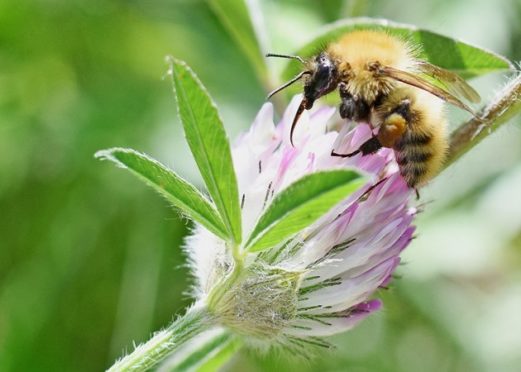Scotland is famous for its rich natural heritage and its accompaniment of bees buzzing and butterflies fluttering.
But recently there have been threats to these industrious insects caused by the encroachment of property developments and other hazards.
Five new wildflower trails – specifically designed to benefit Scotland’s vital pollinators – have, however, now opened at Scottish Natural Heritage nature reserves.
The trails have been created at sites across Scotland, from Flanders Moss in Stirlingshire to Forvie National Nature Reserve in Aberdeenshire and St Cyrus in Angus, to Creag Meagaidh in the Highlands and Taynish in Argyll and Bute.
They all feature short walks and are easily accessible, with information signs along the paths telling visitors more about pollinators and wildflowers and giving tips on how to help establish fertile grounds for bees to do their work.
David Pickett, SNH’s Forvie reserve manager, said: “The trail at Forvie gives visitors a wonderful welcome to the reserve.
“The whole visitor centre is surrounded by wildflowers.
“We planted about 20 species of meadow flowers, as well as creating deadwood piles, planting fish boxes with wildflowers and creating a living wall on part of the visitor centre. It’s spectacular.
“It is wonderful to walk among the flowers and see all the insects that are benefiting from the trail.
“There is also lots of fascinating information about the important work pollinators.”
Stuart MacQuarrie, SNH’s national nature reserve manager, added: “These trails are not only beautiful for visitors to our national nature reserves, but are wonderful for pollinators like bees, butterflies and ladybirds.
“There is so much work being undertaken by so many individuals and organisations in Scotland to bolster pollinator populations.
“We are thrilled that these trails build on these many efforts.”
The five new trails add to an existing site opened last year on the SNH grounds at Battleby, near Perth, which has a stunning wildflower meadow and a thriving bee hotel.
Scotland’s pollinators are a vital part of biodiversity, playing a pivotal role in food and farming, as well as contributing to people’s enjoyment of the countryside, health and well-being.
They do, however, face pressures from habitat degradation, changes in land use, disease, pesticides and climate change.
